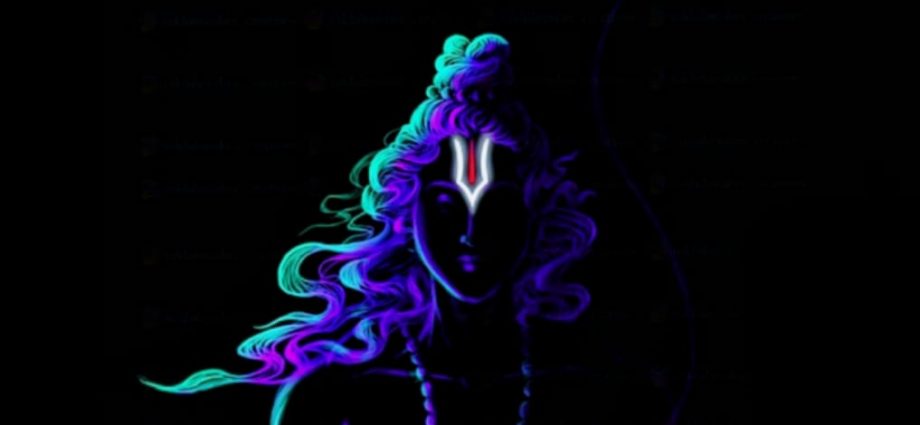Bhagwan Ram is an integral part of Bengal’s culture and Heritage contrary to what the Leftist Intellectuals say The Bhoomi Pujan or the foundation stone-laying ceremony of the Ram Mandir in Ram Janmabhoomi, Ayodhya will be performed on 5th August, 2020. Hindus residing all over the world have been yearning for this day for so many years and West Bengal is no exception. The hindu nationalists of West Bengal have not forgotten the Kothari brothers from Kolkata-Ram and Sharad Kothari, who went to Ayodhya for kar seva, never to return. They were killed in police firing on October 30, 1990 and their bodies were found in a narrow lane near Hanumangarhi, Ayodhya. So 5th August will also be the day to pay homage to them and many more kar sevaks, who laid down their lives fighting to restore Bhagwan Ram to his abode, his place of residence at his birthplace, Ayodhya. The members of the Kothari family have been invited for the Bhoomi Pujan.
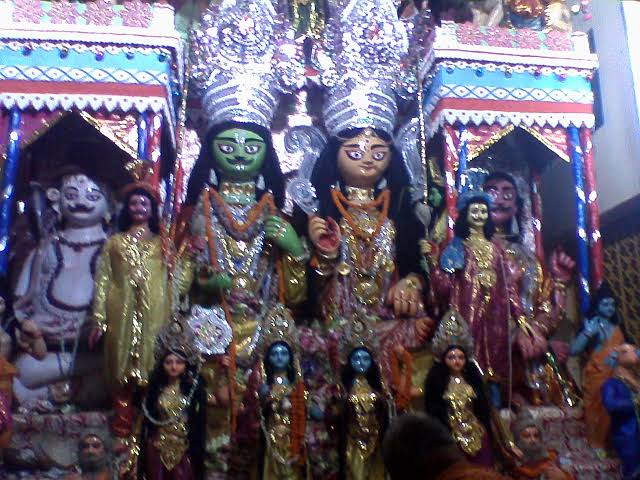
However, Bengal’s Nationalists apprehend that the leftist intelligentsia of Bengal would once again rake up their narrative of Bhagwan Ram not being a popular deity in Bengal, even when the Bengali hindus get ready for the Bhoomi Pujan ceremony. From actor/filmmaker Aparna Sen to Nobel winning Economist, Amartya Sen to filmmaker, Prithish Nandy, to your left-inclined next door neighbour or colleague opine that Bhagwan Sri Ram is alien to Bengal, which they have expressed in occasions more than one, in the past. Bengal’s leftist intelligentsia believe that ‘Jai Sri Ram’ is nothing but a political slogan akin to ‘Inquilab Zindabad’ of the Left front or a war cry. Their view is that Ram (Vaishnavite) is not Bengal’s deity but Durga and Kali (Shakti) are and that Ram Navami is a festival which the BJP-RSS have ‘imported’ from the villages of the North Indian ‘cow belt’- the way they love to address the North Indians disdainfully, into Bengal. This, again is a part of a bigger ploy by this leftist liberal gang to create a divide between Bengalis and the rest of the country by classifying them as ‘others’. Hence they are again classifying hindu deities as those worshipped in Bengal and those in the rest of the country.
The following paragraphs will elucidate why the above beliefs of Bengal’s leftist intelligentsia are totally dumb founded and reflects their complete ignorance about Bengal, it’s culture and heritage.
Akal Bodhon – Those who advocate that Bengalis are worshippers of Shakti and hence worship Maa Durga, Durga Puja being the major festival of Bengal, are ignorant of the fact that the very worship of Durga today, Akal Bodhan refers to the invocation of Durga during an time which is not customary (during the month of Ashvin in autumn) since the conventional period for worship was Vasant (spring) known as Basanti Puja.
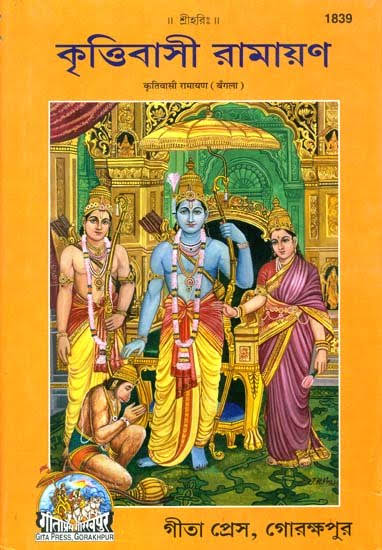
It was customary to worship Maa Durga with 100 neel kamals (blue lotuses). Sri Ram could collect only 99 of them and hence offered one of his eyes as a substitute of the 100th lotus. Pleased with his devotion, Maa Durga blessed him. The battle with Ravan began on Shaptami and Sri Ram killed Ravan at a time which was midway between Ashtami and Navami (Sandhikshan). Ravan was cremated on Dashami, the final day of Durga Puja. Hence that day is also celebrated as Dussehra when effigies of Ravan, his son Meghnad and brother, Kumbhkaran are burnt everywhere in our country. Therefore the four days of the puja that we celebrate ends in the triumph of the good over evil.
Pujas in Bengal and the rest of India are conducted from texts known as Nityakarma Paddhati and the modern Nityakarma texts describe the dhyan and pranam mantra of Ram and Sita, along with others like Saraswati, Lakshmi, Sitala, Dakshinakali, Jagaddhatri, Ganga, Tulsi, Krishna, and Markandeya.
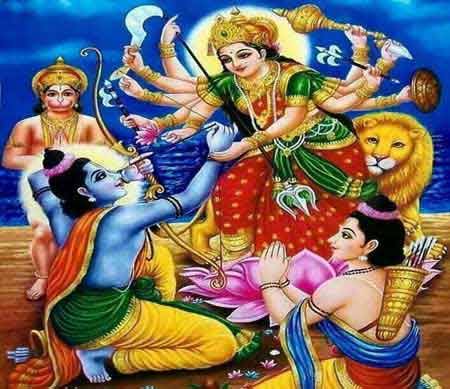
Bengal and Vaishnavism – Vaishnavism has been the essence of Bengal’s Bhakti movement and had been practiced here as early as the 9th century when the Malla dynasty reigned over Rahr Bengal as also in the Southern Gangetic plains. Before Bengal embraced Shaktism, it was the epicenter of Vaishnavism, for ages, perhaps immediately after Adi Sankaracharya. The Madhava’s school of Dvaita or dual Vaishnavism entered Bengal from Udupi across the Vijayanagar kingdom through the shores of Neelachal (Puri, Odisha) and gained prominencel during the 13th century. The popular Vaishnavite saints, Madhavendra Puri, Ishvara Tirtha and Sri Chaitanya Mahaprabhu became the key figures.
Hare Krishna Mantra – ‘Hare Krsna, hare krsna, krsna krsna hare hare, Hare Rama, hare Rama, Rama Rama hare hare’- even if a Bengali does not know any mantra, this is one mantra that every Bengali knows- from the remote corners of rural Bengal, viz. Jangalmahal to the urban localities of Alipur and Jadavpur, Kolkata. This mantra emanates from the Gaudiya (Gaudiya originates from the word ‘Gaud’, meaning Bengal in the ancient times) Vaishnavism inspired by Chaitanya Mahaprabhu ( 1486-1534). The theological basis of this school of Vaishnavism is The Bhagvad Gita or the Bhagvat Puran and it focuses on the divine relationship (bhakti yoga) between Radha and Krishna as the Supreme forms of God. This mantra is an expression of bhakti towards Bhagwan Sri Krishna and Bhagwan Sri Rama and it is sung in the form of kirtan, accompanied by dance. It is noteworthy to mention that Chaitanya Mahaprabhu was a devotee of Bhagwan Ram as well.
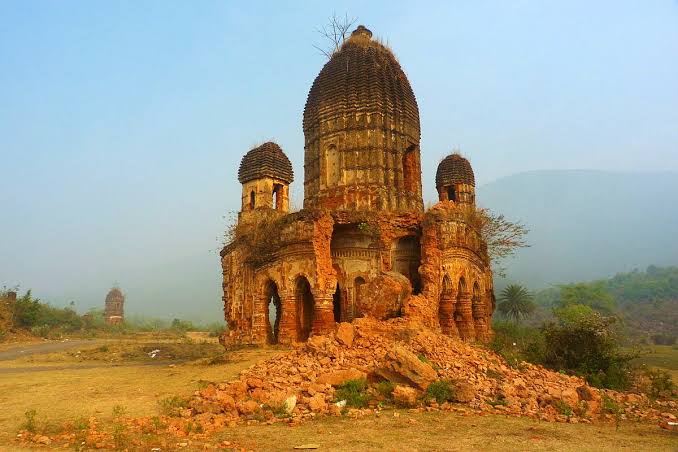
Ramayan in Bengali – The Vaishnavaite Bhakti movement inspired the medieval Bengali poet, Mahakavi Krittibas Ojha (1381-1461) to compose the Ramayan in Bengali. His work, Sri Ram Panchali, popularly known as Krittibasi Ramayan was edited by Joygopal Tarkalamkar and published in Serampore Mission Press. The Krittibasi Ramayan contained vivid description of the Bengali social life and values in the medieval era. The Krittibasi Ramayan inspired many poets of the later era including Gurudeb Rabindranath Tagore and Michael Madhusudan Dutta, even though Michael Madhusudan Dutta’s sonnet, ‘Meghnad Badh Kabya’ had eulogized Ravan while vilifying Sri Ram and is believed to have formed the basis of the Leftist Intelligentsia’s antipathy towards Bhagwan Ram. Mahakavi Krittibas is an ancestor of Bharat Kesri, Dr. Shyama Prasad Mukherjee.
Ram Naam Sangkirtan at Ramkrishna Mission, Belur Math- The Ram Krishna Mission, which was founded by Swami Vivekananda in Kolkata has the maximum number of followers from Bengal, cutting across ideological lines. Ekadashi is one of the regular festivals celebrated at the Ram Krishna Math and Mission during which the Ram Naam Sangkirtan is sung by the congregation. The Ram Naam Sangkirtan performed at Ram Krishna Mission, Belur is of special attraction towards the devotees of the Mission. The singing of this Sangkirtan was started by Srimat Swami Brahmanandaji Maharaj, the first President of the Ram Krishna Sangh. Once during the singing of the Sangkirtan in the Ramakrishna Mission Sevashrama at Varanasi, Swami Brahmanandaji Maharaj had the Darshan of Sri Hanuman. This event again bears evidence of Bengal’s long time connection with Bhagwan Sri Ram.
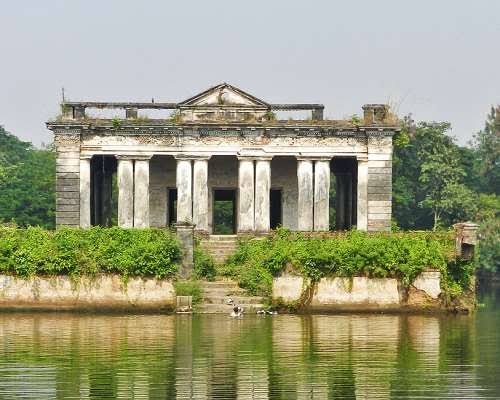
Old saying – There is a famous old saying which every Bengali has learnt from his/her family elders, which goes as ‘Bhoot amar poot, petni amar jhee, Ram Lakkhan buke ache korbi amar ki’ which means that ‘A ghost is my slave; With Ram and Laxman in my heart, the ghost cannot hurt me’. It is popularly believed in Bengal that chanting of Ram’s name helps ward off evil spirits. This belief is sarcastically used by the nationalists of Bengal for social media trolling of the leftists, where the former are often seen referring to the latter as ‘ghosts’ because they are essentially against Sri Ram.
Ram Navami fair of Sonamukhi (Bankura)- The Ram Navami fair at Sonamukhi (Bankura) bear evidence to the fact that celebration of Bhagwan Ram and Ram Navami has been an integral part of the culture of rural Bengal. Sonamukhi, a small town in Bankura, West Bengal hosts a magnificent Ram Navami Mela ever year, which is no less traditional or of cultural importance as the Ram Navami fairs held in the rest of the country. On this day, a congregation of Bauls, the roaming minstrels of Bengal and seers, take place along with the usual ingredients of a traditional fair- shops selling handicrafts, goodies and delicacies, specific to Bengal and the availability of joyrides, which the children as well as adults enjoy. The Ram Navami fair of Sonamukhi is a unique amalgamation of age-old Bengali Vaishnavite stream with the Santhali and Rajwari culture that have only enriched the event.
Worship of Bhagwan Ram- Worshipping Bhagwan Ram in old Bengal was popular among the Kshatriya community, royals and feudal lords. Stories from Ramayan found on terracotta temples bear witness to old Bengal’s devotion for Sri Ram and Ramayan. It has also influenced Bengal’s folk art forms like the Chhou dance of Purulia and scroll painter-singers of Midnapore and Burdwan.
Ram Temples in Bengal – Another argument put forth by the Leftist Liberals of Bengal with regard to their belief that Ram is alien to Bengal, stems from the existence of a far lesser number of Ram Temples in Bengal compared to that dedicated to the other deities. It is needless to mention that all ancient temples in Bengal have been systematically destroyed during the last 800 years by the Islamic plunderers, from Bakhtiyar Khilji to the convert, Kalapahar, and most of the temples that we see today were built in the last two centuries or so. Hence, currently, the minimal existence of Ram Temples in Bengal does not prove that Ram was never worshipped in Bengal. However, one may note that the districts of Midnapore and Nadia hold the most number of vintage Ram Temples.
Among recent temples, some of the most important Ram temples in the last 200-300 years are:
Ram Mandir and Ram Navami Fair of Ramrajatala (Howrah) – The Ram Mandir built by zamindar Ayodhya Ram Chowdhury, around 250 years ago on his personal land, has been the basis from which the town Ramrajatala in Howrah derives it’s name. Art work depicting different episodes of Ramayan and Mahabharat adorn the temple walls. The murti of Sri Ram and Sita Mata are also unique, quite distinct from the murtis seen in North India. The Ram Navami celebrations and fair held here are centuries old and draw a big crowd as well as local business.
Ram Chandra Temple of Guptipara (Hooghly) – The Ram Mandir built in the 18th century by Raja Harish Chandra Roy of Sheorapuli is a four sloped (single pinnacle over ‘char chala’) structure and bear evidence to the fact that worship of Bhagwan Ram was prevalent in Bengal during the British era too.
Raghunath Mandir of Chandrakona (Medinipur) – Temples dedicated to Raghunathji (Bhagwan Ram) Malyanath and Lalji (housing Sri Krishna) were built in the 17th century by Maharaja Kirit Chand of Bardhaman, at Chandrakona, a small town built by the Rajput king, Chandraketu. The 52 ft tall temple is in ruins now.
Ramjiu Deul of Tamluk and Sita-Ram Mandir of Ghatal (Medinipur) – The char chala styled brick and mortar deul dedicated to Sri Ram, was built around the 18th century by the Tamluk rajas. It is situated at Harir Bazar area of Tamluk (old name : Tamralipta). The Sita-Ram Mandir at Ghatal is a terracotta structure built by the maji zamindars in 1865.
Ramachandra Mandir of Chirulia (Medinipur) – This temple, popularly known as ‘Baro Chala Mandir’ or a temple with 12 chalas (sloped structure), is a terracotta structure built in 1843. It is one of the four 12 chala temples in Bengal.
Raghunathji Mandir of Nashipur Akhara (Murshidabad) – The Akhara close to the Nasipur Rajbari complex at Jafargunj is a tourist destination. The Raghunathji temple is present within the Akhara and is an active place of worship.
Sita Ramjiu Mandir of Rautara (Medinipur) – Built by the zamindars of Ghoshpara, the Ghoshs, around 1700 CE, the Sita Ramjiu Mandir of Rautara is a traditional 8 chala (8 sloped) structured temple with terracotta and brickworks. Midnapore has an abundance of Ram Mandirs in many other places too, like the tero-ratna (thirteen pinnacles) Sita Ram mandir at Majipara or the Sita Ram jiu deul of Janardanpur.
Matiari Ram Sita Mandir and Ram Navami Celebrations (Nadia) – The temple, which is a part of the Matiari zamindari administrative complex, houses the murtis of Bhagwan Ram, Sita Mata and Lakshmanji and has it’s own appeal amongst the people of the vicinity, i. e Katwa-Dainhata-Majhergram area. The Ram Navami celebrations here draw a huge crowd from amongst the locals of the nearby towns and villages.
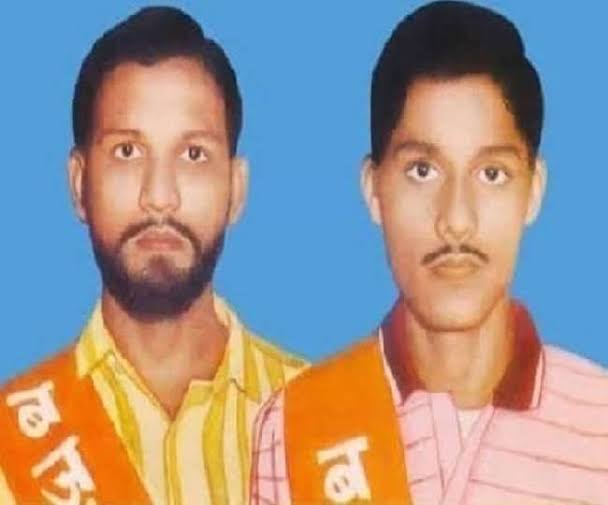
Ram Sita Mandir of Krishnaganj (Nadia) – The red brick and mortar temple is a char chala (four sloped) architecture with a single Ratna (pinnacle) on the top. It is a part of the triplet complex of Sriniwas, viz. Ram Sita Mandir, Rajeshwar Shiv Mandir and Ragnishwar Shiv Mandir, which was built in 1762. Bhagwan Ram is actively worshipped here.
Garh Panchakot – Ruins of Ram Temple (Purulia) – During the Malla occupation of Panchakot in Purulia, the reigning king built a number of temples among which, the Pancharatna temple, a Krishna temple and a Ram temple are worth a mention.
Ramchandra Mandir and Ram Navami of Narajole Royal Palace (Midnapore) – In 1819, the Narajole king, Mohanlal Khan spent Rs. 1 lakh to bring stones from the Ram Janmabhoomi at Ayodhya for construction of a Ram Temple at the Narajole Rajbari complex. The complex houses the Ram and Sita temples and a Ram Mancha to host Ramdhun and jatra palas , the traditional folk art of Bengal. This temple is special because it has been built out of stones from the Ram Janmabhoomi at Ayodhya. It is believed that the childless king was blessed with a son, a heir to his throne, soon after the temple construction. He also started the Ram Rathyatra on Ram Navami and the chariot is still preserved in the temple premises.
Besides the above, there are a few Ram Temples which were built post independence and in recent times viz, The Ram Temple at Durgapur and the Sri Ram Mandir at New Town, Kolkata.
It is evident from the above, that Bhagwan Ram is far from alien to Bengal with a number of temples, works of art, literature and folklore dedicated to him, belying the fake leftist narrative propagated either due to their lack of knowledge on Bengal and it’s traditions or mischievously with the intent of driving a wedge between the Bengalis and the North Indians. Maryada Puroshottam Ram is as revered in Bengal as the rest of the country and hence Bengali hindus, not only from West Bengal but from across the border, in Bangladesh too, are waiting eagerly for the auspicious day of Bhoomi Pujan on 5th August.
References :
i) Organiser dated 6th April, 2019
ii) Indiafacts dated 18th May, 2019 iii) http://www.dvaitanet.in/iskcon.pdf
– Ranita Chanda

